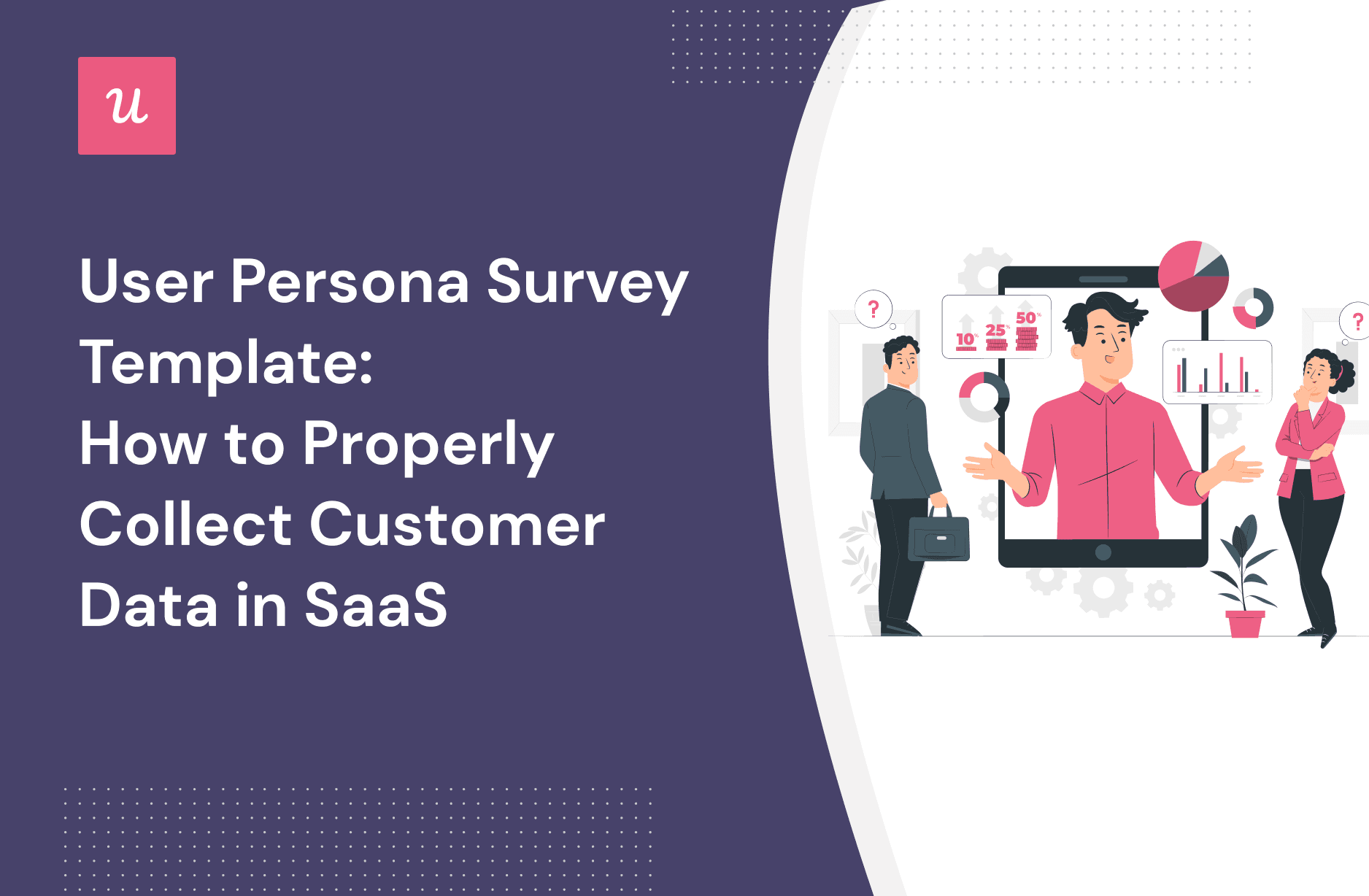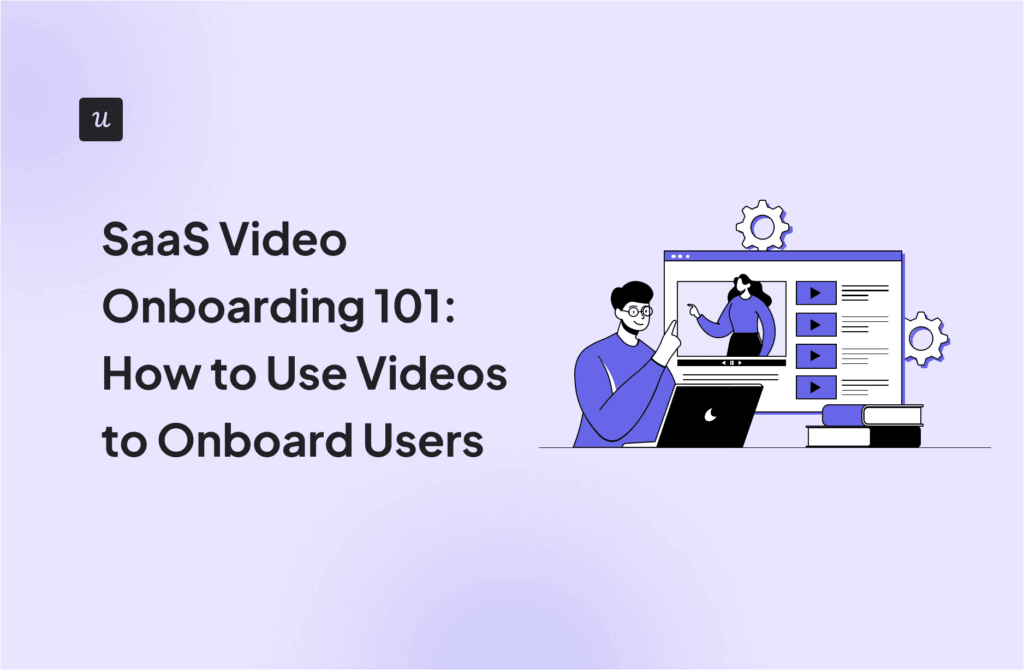
User Persona Survey Template: How to Properly Collect Customer Data in SaaS
Get The Insights!
The fastest way to learn about Product Growth, Management & Trends.
What is a user persona?
A user persona is an abstraction or representation of a specific type of user of your product. Importantly, personas represent real insights about your customers: they shouldn’t be built on shaky guesswork or assumptions.
The stronger the foundation of qualitative and quantitative data gathered through interviews, studies, and surveys, the more useful your personas will be.
Typically, a user persona will highlight your users ‘job-to-be-done’ (and how your product helps achieve that).
Good user persona examples
Should personas represent detailed information about likes, dislikes, and demographics?
Usually not.
Think about what you want to use your personas for. You’re best off ensuring they focus primarily on areas of frustration, challenges, and key objectives.
Mapping that out gives you the best opportunity to identify areas for improvement, and help your customers experience value faster.
It’s rare for SaaS products to cater to just one persona. On the flip side though, your user personas shouldn’t be too fragmented.
“If you try to please everyone, you will please no one.”

User personas vs buyer personas
What’s the primary difference between a user persona and a buyer persona? Well, a buyer isn’t always a user of your product:
- A user persona should represent the people that actually use your product from one day to the next.
- A buyer persona should reflect those who can make decisions about whether to pay out for your product or service (i.e. enabling users).
While buyer personas are important, you should always start with your user.
Why?
Because it’s only through building a quality product and providing an excellent service that you’ll ever be a competitive SaaS product.
You can only do that by understanding how users can make the most of your product.

What is a user persona survey template?
So we know user personas are extremely important. But we’ve also covered why personas are only as valuable as the insights that form them. Where do you get that data from in the first place?
Focused surveys that collect targeted information about your customers: their needs, pain points, roles, jobs to be done, and more.
Mobile surveys are a quick way to measure customer satisfaction, gather real-time feedback, and boost engagement.
How does a persona survey template help?
Creating and launching this sort of survey can help you and your SaaS in several different ways:
- Differentiate between buyer personas and your actual users – As we discussed earlier, those with decision-making power aren’t always representative of your users themselves.
- Understanding your customers’ pain – You create maximum value by leaning in and addressing your customers’ most prominent pain points. Onboarding surveys will help you understand what those are.
- Map out key jobs to be done – To deliver the best possible experience, you need to have crystal clarity on why they’re using your product in the first place. Surveys are a helpful tool for understanding that – and then personalizing the experience accordingly.
- Build personas around your ideal customer – Remember that trying to build something for everyone could ultimately mean you end up satisfying nobody. Personas help you get specific about that.
User persona survey template types you can use to create user personas
Now, we’re going to unpack some of the specific types of user persona survey templates you can deploy in your own SaaS to start understanding more about your customers.
Signup flow user persona survey template
Signup isn’t just about getting people into your app: you can use it as a valuable opportunity to gather valuable information about your customers and their needs.
Miro opts for an approach that gradually reveals more information in a structured, sequential way.

Interestingly, that means it’s simple to delve into far more specific areas (i.e. budget, individual use cases) depending on the complexity of your tool.
Here’s another example from Linkgraph adopting the same aproach.

Welcome screen user persona survey template
You don’t want to greet your users with a blank screen.
A welcome screen is all about creating a positive atmosphere from the very beginning. However, you can leverage the welcome screen to be so much more: this sort of specialist user persona survey typically involves asking a few targeted questions to understand their primary goals.

You can then use this information to personalize their onboarding experience (and deliver value faster).
Validate assumptions user persona research template
While the first two survey types help you to gather customer information and build up a richer picture of the type of users that have signed up, this survey type is to help with something completely different: challenging your assumptions.
You’ll collect data at various key touchpoints to help you validate certain assumptions about your users.
There are several variations to consider:
- Customer satisfaction or CES surveys help you figure out areas of frustration and pain points with different aspects of your product and brand. You can use mobile surveys to gather quick customer feedback.
- You might use a product-market fit (PMF) survey to help you understand whether your product strategy is paying dividends and is capturing the market accordingly.

Or, you might want to validate assumptions about how important specific features are to different user segments with bespoke surveys.
The idea is to test assumptions and continuously update your persona profiles using short in-app surveys.
User persona survey template for uncovering needs
Sometimes, you need to go back to basics: what is it your users actually want to get out of your product? What are the primary user needs that are driving their actions?
A fantastic way of uncovering those underlying needs is bespoke survey templates – precisely one focused on desired features.

Simply put, by polling your users directly you’ll be able to make more informed prioritization decisions.
And that’s the key to effective product management. Just keep in mind, not every request needs to be added to the roadmap. Prioritize based on user needs and product vision to avoid product bloat.
Understand pain points with user experience surveys and shape up your user personas
A slight variation on the previous user persona survey template, these are less focused on features and more about the broader context of your users’ experience.
That means broadening your repertoire far more than just lengthy surveys asking users directly about specific product features.
It could be short, punchy questions you ask – launched contextually – at different stages of the journey.
Ultimately, a SaaS owner or product manager needs to learn the art of gathering various different data sources together, collating, and then synthesizing the findings.

That’s the foundation of crafting an experience within your product that’ll help truly solve customer needs.
Understand negative user personas with churn surveys
It’s not all rosy, though. Inevitably, you are going to have a good chunk of users who decided to leave your product. It can happen for any number of reasons, and it’s important to understand why.
There are a couple of things that are particularly important to discover:
- Opportunities for improvement. Users might leave your product because it simply falls short – it’s not good enough. Use data from churned users to figure out your weak points… and put yourself in the best position to strengthen them.
- Your negative user persona. Just as you’ll have an ideal customer, there’ll be a user group who absolutely don’t want your product – no matter how smooth your onboarding, how powerful your features are, or the pull of your brand. You want to focus on a viable market segment, rather than customers in this group (they could have false expectations about your SaaS that’ll ultimately leave to churn).

Long-form user persona survey template
The devil is in the detail. We discussed earlier in the article the danger of bombarding users with lengthy surveys at the wrong moment. But sometimes, you just need a real depth of understanding. Long-form user survey templates give you that.
But how do you go about setting them up?
Typically, you’ll need incentives to encourage your users to fill them in.
You could reach out directly via email – but a clever alternative is to split a survey into dedicated chunks at different parts of the persona creation process.
How Userpilot can help you create better user persona survey templates
In this section of the blog, we’re going to unpack how Userpilot can help. There are other tools available, but none are quite as impressive or cost-effective.
Build welcome screens with user persona surveys and personalize onboarding
Userpilot makes it simple to build engaging, aesthetically pleasing welcome screens.
Not only can they be customized to fit your brand imagery, but the valuable data you gather on those screens can help you craft an effective, personalized onboarding experience.

Collect NPS data and understand power users
NPS surveys are the widely recognized industry standard for understanding customer loyalty – and using that as a proxy for making important product decisions.

NPS surveys are particularly effective at understanding the behavior of your power users (those who typically have a far greater knowledge of your product than the typical user).
Launch user experience surveys at the right time
For a user persona survey to be effective, it needs to land at the right time. There’s nothing worse than a random, glaring, annoying ask to do something when you’re just trying to do your job.

Think carefully about when, where, and how you launch a survey, and you’re bound to get more meaningful responses. Choose triggers at key points in the journey (i.e. just after a user has discovered a new feature).
Customize and launch in-app surveys of different types with Userpilot to gain insights into the mobile app experience.
Embed longer surveys in-app for better response rates
The last thing you want to do when asking users to complete long-form surveys is to be transported to another site.
Introducing that kind of friction into a journey just means you lose valuable data as customers will inevitably abandon the survey.
By embedding a survey within your app, you’re bound to improve response rates.

Use user persona data collected to improve user experience
No two users are the same – you need to put the data you’ve gathered to good use, and ensure that you personalize your in-app experience accordingly.
How?
With advanced segmentation technology: create multiple personas (i.e. segments) based on a holistic range of data you’ve collected, and use that to craft bespoke, cohesive experiences that drive in-app engagement.

Conclusion
What a whirlwind! We’ve covered exactly what user persona templates are, the various different types of surveys available, when you’d use them (i.e. an onboarding process), and the best tool for integrating them within your product.
So what are you waiting for?
If you want to create product experiences code-free, book a demo call with our team and get started today! Click the link in the banner below for more information.






